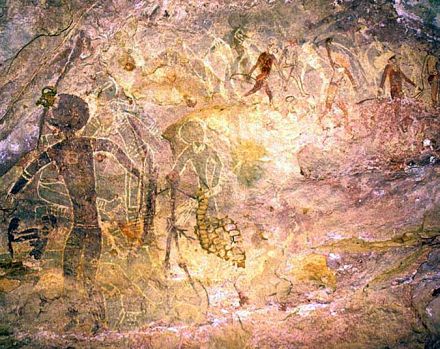io9 June 24 2013

The Sahara in central Africa is the largest hot desert on Earth, its blistering sands practically lifeless. But just a few thousand years ago, it was a home to early human civilizations.
Over the past decade, we’ve gotten a sharp picture of what happened to the people who lived in this lost landscape.
Roughly the size of the United States, the Sahara stretches across several African and Middle Eastern countries, including Egypt, Chad, Sudan, Libya, Algeria and more.
Today, the desert is vast and forbidding. But a few brave archaeologists who traveled deep into the western reaches of the area over the past hundred years have discovered something incredible. There are enormous murals of paleolithic rock art stretching back at least 10,000 years, depicting everything from animals to the clothing people wore during village ceremonies.
Often the people in these paintings are drawn with very round heads, a characteristic Saharan style. Paintings that share this style probably come from peoples with similar cultural origins. As the centuries passed, the paintings become more sophisticated and we see images that show bronze age tools, people riding horses, and using clay pots. The question is, what happened to these people? How did they live in such arid conditions? Where did they go?
